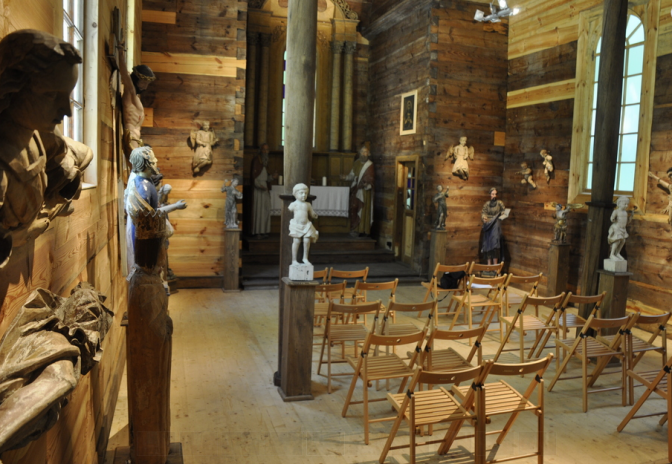
Фото: Шевченківський гай
Klymentiy Sheptytskyi Museum of Folk Architecture and Everyday Life, or Shevchenkivskyi Hai (“ forest grove”), celebrates its 50th anniversary this year. Created based on the Swedsh Skansen folk park concept, and situated in Lviv on an area of 36 forested hectares, it has more than 110 reproduced monuments of folk architecture, including functioning churches and structures with artisans and vendors. And the Hai, a pleasant walk from Lviv centre, but also with parking, has about 22,000 showpieces kept in the museum. Тvoemisto.tv will tell you about the most unique among them.
Cossack boat «Dub» (the Oak)
In addition to ancient households and churches, Shevchenkivsky Hai features an ancient giant Cossack boat, named «Dub», which in Ukrainian means «The Oak».
In the spring of 1966, the boat was brought by water from the bottom to the banks of Horyn’ river, near the village of Orzhiv, Rivne district. The boat is hollowed out of a solid oak log, with a length of 13 m, while the thickness of the bottom is 7 cm. The boat «Dub» is made of age-old wood, which at the time of cessation of growth was about 720 years old.
The scientific analysis reveals that the wood itself originates from the mainland forests of Kryvyi Rih region. There’s also an assumption that the boat belonged to the Cossack detachments taking part in the liberation struggle led by Bohdan Khmelnytsky, the Hetman of the Zaporozhian Host who led a 17th century uprising against the Polish-Lithuanian Commonwealth.
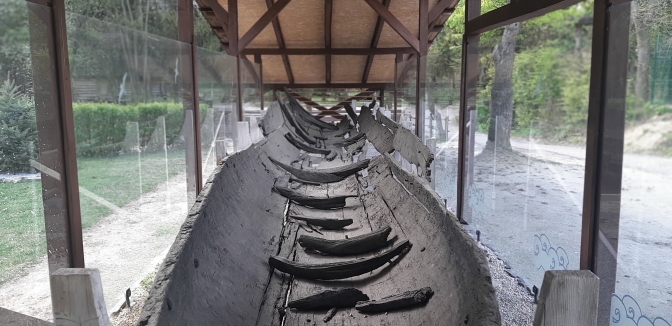
«Mechanical iron» from Tukholka
Mysterious mechanism «magli», «presy-maglivnytsi,» or «mechanical iron» can be found in the exhibition of the household from the village of Tukholka. This device was used for the smoothing of underwear: wet clothes were put between the platens, which squeezed out water and aligned the cloth. Such activity demanded much effort. The machine was «reviving» with the help of a handle, which was sometimes turned around successively by two persons.
To avoid the contact between washed underwear and the floor, people often worked in pairs: one person turned the handle, while the assistant put the folded cloth between the platens. Children often helped their mothers with this task. Finally, «presy-maglivnytsi» grew out of individual use at home as rapidly as they emerged.
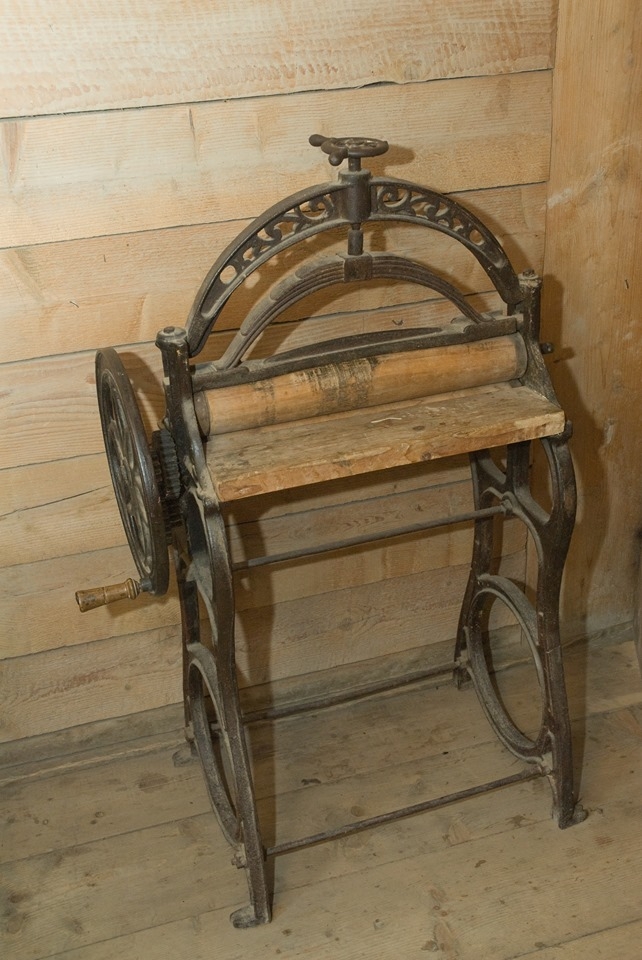
Saint Nicholas on the shutters
Ancient «oboloni» or «stavni» (shutters for the window) with the image of St. Nicholas from the village of Tysivtsi, Starozhynetskyi district in Chernivtsi region, are another of the Hai’s showpieces. Such shutters used to be fastened in the house from inside the window.
In this Lviv’s skansen there are two churches, named after Nicholas the Wonderworker. One of them – the Church of St. Nicholas from the village of Kryvka, Turka district, built in 1763, was the first building in the park. Another one is from the village of Sokoliv, Buchach district of Ternopil region.
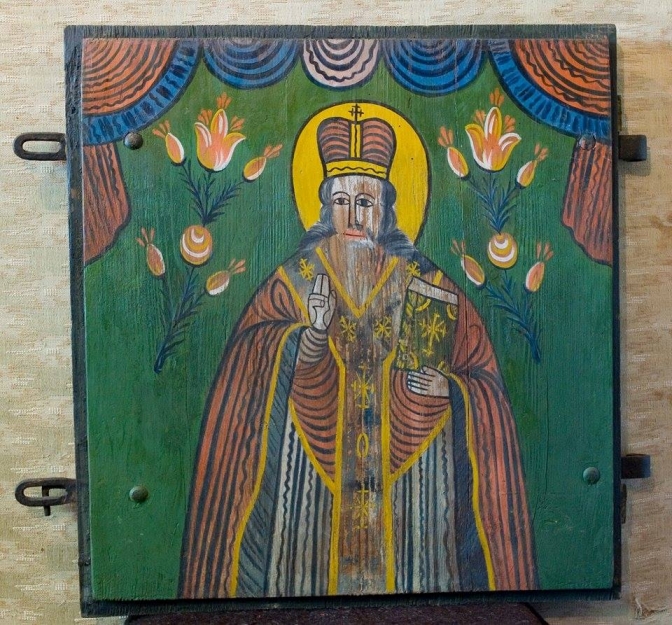
Unique necklace of coins
«Salby» – jewelry with a weird name is kept in the museum’s stock collection. The etymology can be traced in the vocabulary of Romanian language, where «Salba» means «necklace».
Salba is an elongated double cloth with rounded corners and sewn rows of coins (along or across), which was fixed on the neck with a band, sewn to the cloth. It was usually worn with other jewelry – glass or coral necklace.
A legend from Bukovyna says that the local population drowned Tatars and Turks and took away their best jewelry. It’s quite probable that at that time the people of Bukovyna added «salby» to the complex of local traditional clothing, and they have preserved the decoration up to this day. Differences in the time of production, circulation, and face value of coins on the salb are direct historical facts that point out to the trade and economic ties of the region and the domination of different empires and peoples in this area.
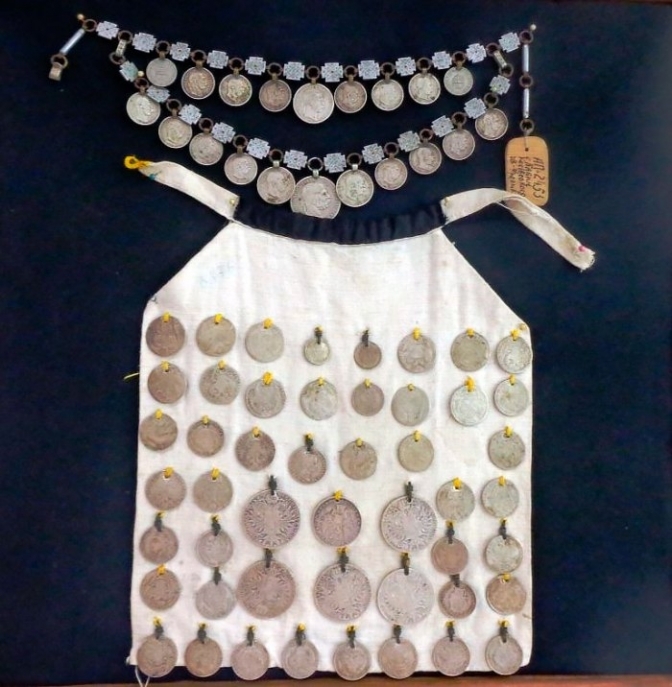
30 sculptures of the church
The museum also has a permanent exhibition, «Wooden Sculpture of Galicia». In a church from the village of Yazlivchyk there are presented 30 samples of sculpture dating back to the period of the 18th and 19th centuries. All figures were carved from wood, some covered with levkas, gilded, or made polychrome.
Unfortunately, the authors of these sculptures are unknown. Most of the figures are carved in a primitive folk style, although there are works by professional masters: the sculpture of the Virgin «Immaculate Conception», St. Mary the Magdalene, the holy apostles Peter and Paul, and angels – these are created in the Baroque style.
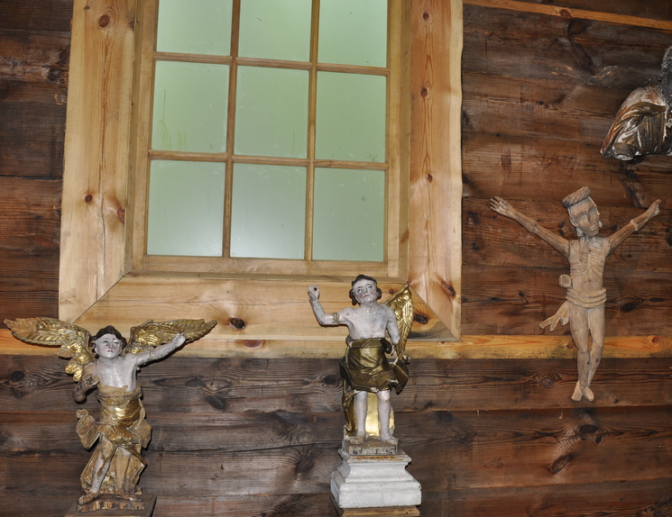
For more information on the folk park: https://lvivskansen.org (Ukrainian)
Prepared by Ira Saikevych
Translation by Vitalii Holich
Photo from the museum
To receive our weekly digest of stories to your e-mail, please follow us on Substack.




